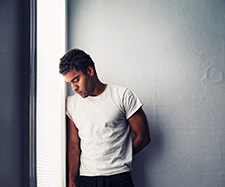Coping with Loneliness During Self-Isolation

The recent outbreak and rapid spread of COVID-19 has a lot of people self-isolating. While necessary to curb the spread of the disease, self-isolation can lead to people feeling cut off from society, like they’ve lost their routine, or are being forced to take time out from important relationships.
If you’re self-isolating, you’re not alone; thousands of people are taking this important measure. This article will show you ways that you can combat loneliness while following self-isolation rules.
Self-isolation vs. physicaldistancing.
Self-isolation is a precautionary measure that’s meant to benefit society by removing carriers and potential carriers of COVID-19 from the general population in order to protect the safety of the most vulnerable. It means removing yourself from the general population by staying at home for a recommended number of days. You may need assistance with things like grocery shopping and pharmacy runs.
Health Canada has up to date guidelines about who should be self-isolating. Please refer to them for more information. check with your local health authority for more information on who should be self-isolating.
You might have also heard the term “social distancing” or "physical distancing". This is when someone tries to avoid contact with other people even though they have not been exposed to COVID-19. Physical distancing means:
- staying at home whenever possible
- working from home if that’s an option for you
- avoiding crowded public places such as shops, bars, restaurants, and gyms
- avoiding public transit where large groups of people are brought together such as buses, trains, and planes
- limiting contact with people known to have been travelling, or have contracted or have come into contact with someone who has contracted COVID-19
By choosing to practice physical distancing, someone is actively trying to limit the spread of the virus.
Loneliness and self-isolation.
It’s no surprise that self-isolation and all the actions it requires might lead to loneliness. Even if you have a partner, children, or roommates self-isolating with you, it’s natural to miss the routine that seeing other people brings.
If you’re in self-isolation, it might help to remind yourself that you’re not just doing it for your benefit—you’re doing it to ensure that those who are more vulnerable (people who are immuno-compromised, elderly, or already sick) aren’t at risk.
Other things that may help alleviate feelings of loneliness include:
Connect with family and friends. Arrange for phone or video calls with loved ones, even if it’s just to check in. You might find that other people are sharing your worries, and connecting can be a great way to see you’re not alone.
Pick a “work in progress” project and finish it. If you’re stuck inside, you might find that you have too much free time. Why not pick up that book you’ve been meaning to finish, that instrument you’ve been meaning to learn how to play, or that recipe you’ve been itching to try? If you’re struggling, look to social media like Facebook, Instagram, and YouTube, to connect with other people who share your interests.
Look into community resources available to you. Nextdoor, the social media platform that connects neighbours, can be a great resource if you need help with errands, groceries deliveries, and packages that need to be picked up. (Be sure to follow guidelines for safety to avoid scams or protect yourself.) Also, you may want to take advantage of grocery and takeout delivery and services are now offering “no contact” options.
Find creative ways to get exercise. Are you spending all day in your pajamas? Do you have an established routine? Sometimes, feeling like you’re all alone can come from a sense of purposelessness. The best way to not get lethargic when you’re at home is to have some goals in mind throughout the day, including exercise. This doesn’t need to be complicated: if you don’t have a running or spin machine at home, you can still do push-ups and sit-ups. Search YouTube for an at-home workout that doesn’t require weights if you’re unsure where to start!
If you are able to go outside without breaking the rules of your self-isolation, get some fresh air. This can be tricky, but if you can have a cup of tea in a garden or on a balcony, it will help negate the feeling that you’re stuck at home. Even if you don’t have outdoor space at your home, try opening the windows to let in fresh air.
Connect with your assistance program. Trained counsellors are always available to talk about issues of stress, worry, isolation, and fears about the future. Get in touch with your assistance program if COVID-19 is causing you stress or anxiety.
